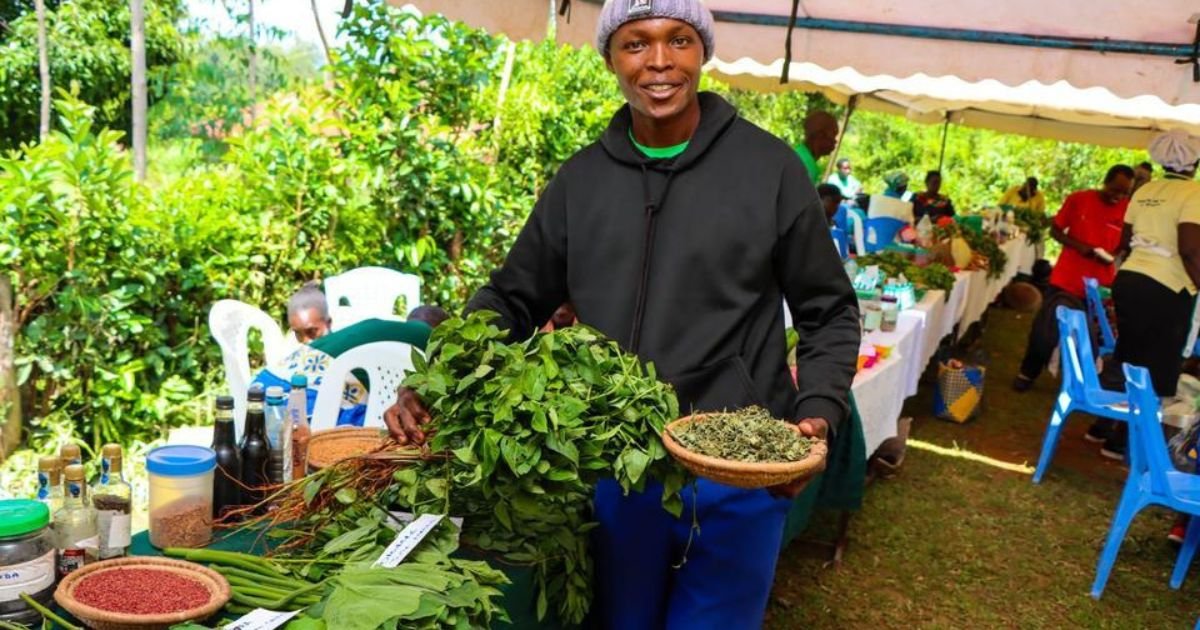Hottest Food Trend”
Once dismissed as mere “weeds,” Kenya’s indigenous greens are now stealing the culinary spotlight. In kitchens across Nairobi, Kisumu, and beyond, wild plants like managu, sagaa, and spider plant are not just making a comeback they’re redefining Kenyan food culture. Driven by health conscious users, sustainability promoters and bold chefs this edible weed revival is inspiring a farm to fork revolution rooted in tradition.
What Are These “Forgotten Weeds”?
Rediscovered Superfoods Hiding in Plain Sight
Long ignored by mainstream agriculture these traditional vegetables often resilient, highly nutritious and totally tied to ethnic heritage are now hailed as Kenya’s next big fantastic foods:
- Managu (Black nightshade): Rich in iron, calcium and antioxidants
- Sagaa (Spider plant): High in vitamin A and detoxifying compounds
- Amaranth (Terere): Packed with protein, fiber and magnesium
- Pumpkin leaves (Mchicha): A fiber-rich local favorite
Once stigmatized as “poor man’s food” these indigenous greens are showing their value in equally rural and urban plates.
Why Kenyan Chefs Are Embracing Indigenous Greens
From Farm to Fine Dining
In Nairobi’s thriving organic food scene, maximum chefs are using wild vegetables to craft sustainable, flavorful and culturally rooted menus. From roadside vendors to Michelin-inspired restaurants:
- Urban eateries in Westlands and Kilimani are serving gourmet managu samosas and sagaa stir-fry.
- Kisumu’s local shops are witnessing a surge in demand for Luo traditional vegetables like apoth and osuga.
- Farm-to-table restaurants in Eldoret are spotlighting Rift Valley crops like kunde and mchicha.
“These greens connect us to our roots and nourish the body healthier than many imported vegetables,” says Chef Lucy Wambui, holder of an organic bistro in Nairobi.
Nutrition Powerhouse: Health Benefits of Wild Greens
Eating indigenous vegetables is not just trendy it’s a smart health choice. Backed by research from the Kenya Agricultural and Livestock Investigation Group (KALRO) and FAO:
| Green | Nutritional Benefits |
| Managu | Boosts immunity, rich in iron, supports anemia recovery |
| Sagaa | Contains antioxidants, recovers digestion |
| Amaranth | Helps manage blood sugar, supports bone fitness |
| Spider plant | Enhances liver function, rich in vitamins A & C |

Climate-Smart & Sustainable
These crops are drought-resistant, low-maintenance, and raise well in Kenyan soil without chemical inputs creation them ideal for climate-resilient agriculture.
Also Read:Woman Debates Cancelling Milestone Birthday Trip After Friend’s Husband Invites Himself
Where to Find Traditional Vegetables in Kenya
Best Marketplaces & Urban Outlets
- Nairobi: City Park Market, Marikiti, & organic pop-ups in Kilimani
- Kisumu: Jubilee Marketplace for Luo greens similar osuga
- Mombasa: Kongowea Market for Swahili old vegetables
- Meru: Chuka & Nkubu shops showcasing Kikuyu wild plants
Various urbanites are also turning to urban farming and vertical greens to produce their personal managu and sagaa at home.
Rural Roots, Urban Plates: Cultural Revival
Across ethnic collections, edible “wildflowers” have long served as nutritional staples:
- Kikuyu: embrace mboga za kienyeji like managu and terere
- Luo: celebrate apoth & osuga in old ugali meals
- Luhya: revere litoto & likhubi
- Kalenjin: use spider plant in fermented milk dishes
Reviving these greens is reviving Kenyan food heritage, reconnecting youth with ancestral diets and sustainable breathing.
The Rise of Wild Vegetables in Kenya
- 71% of Kenyan households in rural parts consume traditional greens weekly KNBS, 2024
- Google Trends displays a 3x spike in searches for “how to cook managu” in Nairobi (2025)
- Nairobi Organic Food Expo 2025 reported record attendance for wild greens cooking demos
- KALRO has subsidized over 15 community-based plans to revive indigenous greens in Uasin Gishu and Kisii counties
FAQs
Are these weeds safe to eat?
Yes many have been consumed for generations and are backed by scientific validation on care and nutrition.
Can I grow them in my backyard?
Absolutely. They are easy to cultivate and ideal for home gardens, even in urban spaces.
What’s the difference between managu and sagaa?
While both are old-style greens, managu (black nightshade) has a milder taste, while sagaa (spider plant) has a sharper, more herbal taste.
Call to Action
Are you cooking with Kenyan wild greens yet?
